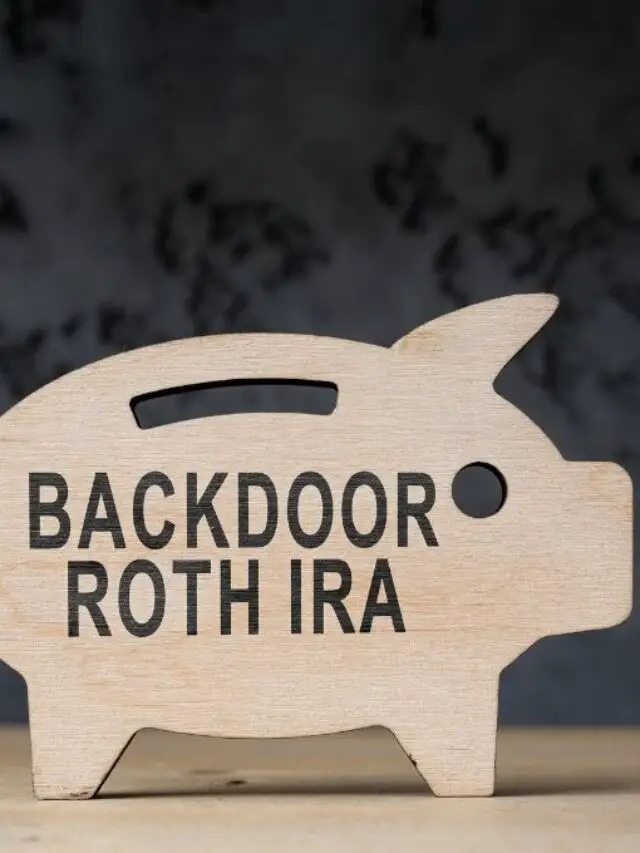Retirement planning might sound like a topic for those well into their careers, yet experts universally urge individuals to start as young as feasible. Among the multitude of retirement savings options available, Roth Individual Retirement Accounts (IRAs) frequently captivate the attention of potential investors. But what is Roth IRA? It’s a distinct, tax-advantageous tool designed to assist you in securing a more financially stable future. The allure of Roth IRAs stems from their unique tax benefits and remarkable flexibility, making them worth investigating regardless of your current life stage. As 2023 beckons with ever-changing fiscal landscapes, knowing what a Roth IRA offers can be instrumental in anchoring your long-term financial goals.
Table of Contents
| Key Takeaways | |
|---|---|
| ⇝ | Roth IRAs boast singular tax advantages that differentiate them from traditional IRAs. |
| ⇝ | Understanding income and contribution limitations is crucial for prospective investors. |
| ⇝ | Various investment options exist within Roth IRAs, offering considerable latitude for diversification. |
| ⇝ | Common pitfalls can be easily sidestepped with prudent planning. |
| ⇝ | Roth IRAs can serve as a vital part of a holistic retirement and estate planning strategy. |
Roth IRA Demystified: What is Roth IRA?
In the year 1997, the landscape of retirement savings underwent a pivotal transformation. Senator William Roth pioneered this change by introducing the Roth Individual Retirement Account, commonly referred to as Roth IRA. So, what is Roth IRA? At its essence, it’s an audacious financial instrument designed for post-tax contributions, standing apart from Traditional IRAs, which predominantly deal with pre-tax dollars.
Your Roth IRA serves as an incubator for your post-tax investments. Herein, the money grows in a tax-sheltered environment. Picture it: your contributions increase in value, and when you eventually reach the age of 59.5, you can withdraw those funds without any tax penalties. A boon, particularly when tax rates are continually on an upward trajectory.
So, to reiterate, what is Roth IRA? It’s not just a receptacle for your retirement savings. It’s a sophisticated tool engineered to provide you with greater control over your financial destiny. And here’s a feature often overlooked: Roth IRAs lack an age limit for contributions. That means you can continue to invest as long as you are still earning an income—a liberating feature, especially for those who may be late to the retirement planning game.
| Useful Tip |
|---|
| If you’re newly navigating the labyrinth of retirement options, Roth IRAs represent a unique juncture where flexibility meets benefit. Harnessing its tax advantages and relaxed contribution guidelines can build a sizable nest egg for your future. |
Lastly, to squarely answer a frequently broached question, “Is Roth IRA pretax?”—Roth IRAs are, in fact, a destination for your post-tax dollars, setting them apart from other types of retirement savings accounts, including many employer-sponsored plans.
The Anatomy of Roth IRA: How it Works Behind the Scenes
To fully appreciate the Roth IRA, a breakdown of its operational facets proves enlightening. Unlike Traditional IRAs, which extend tax benefits at the time of contribution, Roth IRAs delay this gratification until withdrawal. It’s a tax-timing dance that confounds many but reaps dividends down the line.
The Initial Contribution Phase
In this phase, you fuel your Roth IRA with after-tax dollars. While your contributions don’t garner immediate tax deductions, they pave the way for future tax advantages. Importantly, you’re allowed to withdraw these contributions tax and penalty-free at any time, a feature that fosters unmatched liquidity.
The Accumulation Phase
Once inside your Roth IRA, your investments luxuriate in a tax-free growth environment. Whether stocks, bonds, or mutual funds, the power of compounded growth acts as a formidable ally in your quest for financial prosperity.
The Withdrawal Phase
Upon reaching the golden age of 59 1/2 and after holding the account for at least five years, withdrawals become entirely tax-free. This is where the Roth IRA shows its true colors by providing a stream of tax-free income in retirement.
What is the best Roth IRA account? This question can only be answered once you’ve scrutinized various providers’ investment options, account fees, and additional services. After all, the anatomy of the Roth account remains consistent; it’s the extra bells and whistles that differentiate one provider from another.
Deciphering 2023 Roth IRA Income and Contribution Limits
When considering Roth IRAs, it’s imperative to scrutinize the ever-evolving landscape of income and contribution limits. As we navigate the year 2023, fresh alterations to these regulations are afoot. Your contribution potential hinges on two pivotal aspects: your filing status and your Modified Adjusted Gross Income (MAGI).
Updated Roth IRA Contribution Limits for 2023
- Unmarried Individuals or Married, but Filing Separately:
- Income: Less than $138,000
- Contribution: $6,500 or $7,500 if 50 or older
- Married Joint Filing or Surviving Spouses:
- Income: Less than $218,000
- Contribution: $6,500 or $7,500 if 50 or older
| Useful Tip |
|---|
| Diligence is key when grappling with these contribution thresholds. Exceeding the set limits invites penalties, so it’s prudent to keep abreast of the rule changes, particularly as we traverse 2023. |
Regarding the query, “What is the maximum Roth IRA contribution for 2023?” these latest figures clarify the ceiling hovers at either $6,500 or $7,500, based on your age bracket.
Income Limits:
- Single Filers, etc.: Full contribution up to $138,000; phased out between $138,000 and $153,000; no contribution allowed above $153,000
- Married, and Filing Jointly: Full contribution up to $218,000; phased out between $218,000 and $228,000; no contribution allowed above $228,000
The question “Is Roth IRA a good idea?” gains extra layers of nuance when examined in light of the 2023 contribution and income limits. A labyrinth they may be, but these rules provide the roadmap for crafting an effective retirement savings strategy.
The inquiry, “What is Roth IRA max for 2023?”, now boasts a revised answer: $6,500 or $7,500, predicated on both your age and MAGI. Thus informed, you can approach your retirement planning with reinvigorated precision.
Unpacking the Alluring Benefits of a Roth IRA
Possessing a Roth IRA confers a series of enticing benefits that resonate strongly with individuals keen on fortifying their financial futures. While Traditional IRAs have their own merits, Roth IRAs offer distinct advantages worth contemplating.
Tax-Free Withdrawals
One of the salient attributes of a Roth IRA centers on its tax-free withdrawal capabilities. All earnings and contributions can be pulled out without enduring the drag of taxation, provided certain conditions are met.
| Useful Tip |
|---|
| Be cautious when initiating withdrawals. To reap the benefits of tax-free gains, adhere to the qualified distribution criteria, including age and holding period. |
No Required Minimum Distributions (RMDs)
Unlike Traditional IRAs, Roth IRAs harbor no mandated minimum distributions. This feature enables a more elastic, hands-off approach to retirement savings, enriching your long-term financial strategies.
Flexibility in Contributions
Roth IRAs allow for backdoor contributions and conversions from other retirement accounts. Consequently, this flexibility lets you diversify your retirement portfolio with relative ease.
What Roth IRA should I get? Given the benefits laid bare, the decision often boils down to your tax situation and retirement goals. If you’re in search of flexibility and tax-efficient withdrawals, Roth IRAs stand as a compelling option.
Estate Planning Benefits
Should you leave behind assets, Roth IRAs offer a more favorable landscape for your beneficiaries. Essentially, your heirs could inherit a tax-free income, thereby elevating this account type in the realm of estate planning.
Is Roth IRA guaranteed? While the account type itself doesn’t assure specific returns, its structural benefits could be construed as a safeguard against various financial uncertainties.
Strategies for Optimizing Your Roth IRA
Mastering the intricacies of Roth IRAs equips you with a veritable arsenal of financial optimization techniques. Whether you’re an inveterate investor or a neophyte to the world of retirement accounts, deploying precise strategies can significantly elevate your financial trajectory.
Diversify Your Investment Portfolio
One of the cornerstones of effective Roth IRA management involves diversification. The incorporation of a myriad of asset classes such as stocks, bonds, and perhaps even real estate through REITs, hedges against systemic risk.
| Useful Tip |
|---|
| With asset diversification, always adhere to the adage—don’t put all your eggs in one basket. A balanced portfolio enables a more resilient financial outlook. |
Harness the Power of Dollar-Cost Averaging
Committing a fixed amount of money at regular intervals—regardless of market conditions—can mitigate the impact of market volatility. This strategy, known as dollar-cost averaging, enhances your purchase power when prices are low, ultimately reducing the average cost of your investments.
Leverage the ‘Backdoor’ Roth IRA Option
For those whose income exceeds the designated Roth IRA limits, fret not. A backdoor Roth IRA permits high-earners to skirt income limitations through a Traditional IRA conversion. It’s a savvy move, albeit one that requires careful tax considerations.
Harvest Tax Losses
Underperforming assets can be sold to offset gains in your portfolio. This tactic, commonly known as tax-loss harvesting, might not offer immediate tax benefits in a Roth IRA but can be advantageous for your overall financial landscape.
Is Roth IRA a good idea? Given its flexibility and potential for tax-free growth, most financial advisors would resoundingly affirm its utility.
Sequenced Actions: Launching Your Roth IRA
Commencing your expedition into the complex world of Roth IRA investments could undoubtedly evoke apprehensions, particularly for individuals lacking a solid grounding in financial intricacies. Rest easy; the blueprint outlined herein will shepherd you through the intricacies, one calculated move at a stretch.
Identify Your Eligibility
Prior to diving headlong into the Roth IRA investment ocean, pause to establish whether you qualify. Pay particular attention to your Modified Adjusted Gross Income (MAGI) and the category under which you’ll file your taxes.
Roth IRA Eligibility based on Filing Status and MAGI for 2023
| Filing Status | MAGI | Contribution Limit 2023 |
| Single or Head of Household | < $138,000 | $6,500 ($7,500 if 50 or older) |
| > $138,000 but < $153,000 | Contribution is reduced | |
| > $153,000 | No contribution allowed | |
| Married and Filing Jointly or Widowed Spouse | < $218,000 | $6,500 ($7,500 if 50 or older) |
| > $218,000 but < $228,000 | Contribution is reduced | |
| > $228,000 | No contribution allowed |
| Useful Tip |
|---|
| Make sure to confirm your eligibility annually, as Roth IRA income limits are subject to change. |
Select the Right Provider
Once eligibility has been established, sift through the myriad of providers offering Roth IRAs. Banks, brokerage firms, and robo-advisors are all vying for your patronage. Factors such as account fees, investment options, and customer service should sway your decision.
Dive into the Paperwork
Undoubtedly, this step can be tedious, requiring meticulous attention to detail. Typically, the provider will request personal identification documents, tax records, and potentially even employment verification.
Make Your Initial Contribution
Having scaled the paperwork mountain, it’s time to fund your account. What is the maximum Roth IRA contribution for 2023? If you’re under 50, it stands at $6,500. Those over 50 can contribute $7,500.
Allocate Your Investments
Last but not least, decide how to allocate your initial and future contributions among the available investment options. Stocks, bonds, mutual funds, or ETFs—choose instruments aligned with your risk tolerance and financial goals.
Common Pitfalls and How to Dodge Them: Roth IRA Edition
Navigating the labyrinth of Roth IRA investments can be fraught with perilous traps, capable of derailing your financial journey. Nevertheless, with proper foresight and judicious planning, you can sidestep these common pitfalls.
Overlooking Contribution Limits
One of the first snares investors often find themselves ensnared in relates to contribution limits. What is the maximum Roth IRA contribution for 2023? An oversight here could invite unnecessary penalties.
Table 2: Penalties for Excess Contributions
| Contribution Over Limit | Penalty Percent | Actual Penalty on $6,500 |
| $100 | 6% | $6 |
| $500 | 6% | $30 |
| $1,000 | 6% | $60 |
| Useful Tip |
|---|
| Always double-check your contribution numbers. Exceeding the limits might initially appear harmless but could come back to haunt you in the form of penalties. |
Neglecting to Diversify
Putting all your financial eggs in one basket is another common mistake. Diversification across asset classes can mitigate risk.
Procrastinating Contributions
Time is a potent factor in the world of investing. The earlier you contribute, the more you stand to gain from the magic of compound interest.
Ignoring Tax Implications
Many people question, “Is Roth IRA pretax?” No, it isn’t. Understanding the tax implications can make a significant difference in your long-term financial health.
Failure to Update Beneficiaries
An often-overlooked aspect, especially among younger investors, is the failure to update beneficiaries. Circumstances change; your Roth IRA should reflect these changes.
Roth IRA Vs. Traditional IRA: A Side-by-Side Comparison
In the universe of retirement investment vehicles, Roth IRAs and Traditional IRAs reign as two of the most prominent options. Given the gravity of selecting the right avenue for your nest egg, it behooves us to engage in a meticulous comparison of these two.
Roth IRA and Traditional IRA – A Comparative Snapshot
| Features | Roth IRA | Traditional IRA |
| Tax Treatment of Contributions | Post-tax dollars | Pre-tax dollars |
| Tax Treatment of Withdrawals | Tax-free | Ordinary income tax |
| Required Minimum Distributions(RMD) | Not applicable | Starts at age 72 |
| Income Limit for Contributions | Yes, varies by filing status | No, but deductions could be limited |
| Early Withdrawal Penalties | On earnings only, not principal | On both principal and earnings |
In delving into the details, it becomes abundantly clear that each vehicle serves unique financial needs and scenarios.
Tax Considerations
Taxation stands as a monumental factor when choosing between a Roth and a Traditional IRA. In a Roth IRA, your money grows tax-free. In stark contrast, withdrawals from a Traditional IRA are taxed as regular income.
| Useful Tip |
|---|
| If your current tax bracket sits lower than what you anticipate in retirement, leaning toward a Roth IRA could furnish considerable advantages. |
Required Minimum Distributions
Is Roth IRA guaranteed to have no required minimum distributions (RMDs)? Yes, Roth IRAs lack RMDs. Traditional IRAs, however, necessitate such distributions, commencing at age 72.
Accessibility of Funds
The Roth IRA offers more flexibility, allowing for penalty-free withdrawals of contributions. Traditional IRAs, on the other hand, impose more stringent restrictions on early access to your funds.
Suitability for Different Income Levels
When contemplating what Roth IRA should I get, consider the income limits. For high earners, contributing to a Traditional IRA might be the only feasible option, given Roth IRA’s income restrictions.
Roth IRA and Your Estate: A Quick Look
Embarking upon the labyrinthine journey of estate planning might induce trepidation. Nonetheless, incorporating a Roth IRA into this mix emerges as a cogent strategy, meriting profound examination. Here we demystify how a Roth IRA intertwines with the intricate tapestry of your estate.
Table 4: Roth IRA Estate Planning Considerations
| Factors | Roth IRA Pros | Roth IRA Cons |
| Inheritance Tax Implications | Tax-free inheritance | None |
| Required Minimum Distributions | Absent | Not applicable |
| Beneficiary Flexibility | High | Limited by account rules |
Taxation: A Double-Edged Sword
Typically, an inheritance comes saddled with tax implications. Yet, with a Roth IRA, the story transmutes. Inheritors often wonder: “Is Roth IRA pretax?” The withdrawals are tax-free, elevating the Roth IRA into a haven of tax-efficiency within the confines of estate planning.
Fluidity of Asset Transfer
One can’t overlook the fluidity offered by Roth IRAs in transferring assets. The absence of required minimum distributions (RMDs) stands as a noteworthy feature.
Beneficiary Designations
When it comes to selecting beneficiaries, Roth IRAs proffer a high degree of latitude. You possess the autonomy to periodically update beneficiaries in sync with life changes.
| Useful Tip |
|---|
| Consult a financial advisor and estate attorney for tailor-made advice that accommodates the unique contours of your estate and Roth IRA. |
Spousal and Non-Spousal Inheritance
A Roth IRA offers seamless transitions for both spousal and non-spousal inheritors, eliminating complex legal entanglements. For spouses, an effortless rollover into their own Roth IRA stands as an option.
Conclusion: The Untapped Power of Roth IRAs
You’ve traversed the intricate labyrinth of Roth IRAs—navigating through the murky waters of eligibility, unraveling the nuances of contributions, and even dissecting its estate implications. Indeed, Roth IRAs are not just mere receptacles for your hard-earned money; they’re robust financial tools that, when wielded correctly, offer immense fiscal advantages.
A Final Recap
In summary, Roth IRAs encompass a panoply of possibilities, stretching far beyond just retirement planning. From tax advantages to strategic estate planning, the implications are profound. With the appropriate balance of contributions and wise asset allocation, the Roth IRA can metamorphose into one of your most potent financial allies.
| Useful Tip |
|---|
| Continual education is vital. Stay abreast of tax laws and financial trends. This habit ensures your Roth IRA strategy remains both effective and compliant with the latest regulations. |
Additional Resources
- Books and Guides:
- “The Total Money Makeover” by Dave Ramsey
- “Retire Inspired” by Chris Hogan
- Websites:
- IRS.gov: Official source for contribution limits and tax implications
- Bogleheads Forum: Community-driven financial advice
Call to Action
Ready to optimize your financial portfolio? Don’t let inertia deter you. Initiate your Roth IRA today, and carve out a secure, tax-efficient future for yourself and your heirs.
Frequently Asked Questions (FAQs)
- Is Roth IRA guaranteed?
No, investments are subject to market risk. - What Roth IRA should I get?
Consider your risk tolerance and financial goals. - What is the best Roth IRA account?
Varies based on individual needs and investment options. - What is Roth IRA max for 2023?
$6,500, or $7,500 if you’re 50 or older. - Is Roth IRA a good idea?
Generally yes, but personal circumstances can vary. - How does Roth IRA affect my taxes?
Contributions are after-tax, but withdrawals are often tax-free. - Can I lose money in a Roth IRA?
Yes, if your investments perform poorly. - How to transfer funds to a Roth IRA?
Via bank transfer, check, or a rollover from another account. - Are there penalties for early withdrawal?
Yes, unless you meet certain conditions like a first-time home purchase. - Can non-U.S. residents open a Roth IRA?
Generally no, but there are exceptions for those who have U.S. earned income.
Thus, we conclude our comprehensive guide on Roth IRAs—a financial tool teeming with potential, yet often shrouded in enigma. Your next step? Capitalize on this untapped power. Seize control of your fiscal future, today.
Prashant Chauhan
Author @ Finance RuffleMeet Prashant Pratap Chauhan, the savvy founder behind Finance Ruffle, a hub for sharp financial insights and expert analysis in the realm of finance blogging.




Pingback: Unlocking 7 Secrets To Maximize Your Traditional IRA: A Must-Read Guide | Finance Ruffle
Pingback: The Real Deal On Self-Employed IRA Contribution Limits: 6 Powerful Pointers | Finance Ruffle
Pingback: What Is The Required Minimum Distribution (RMD)? 6 Must-Know Powerful Aspects | Finance Ruffle